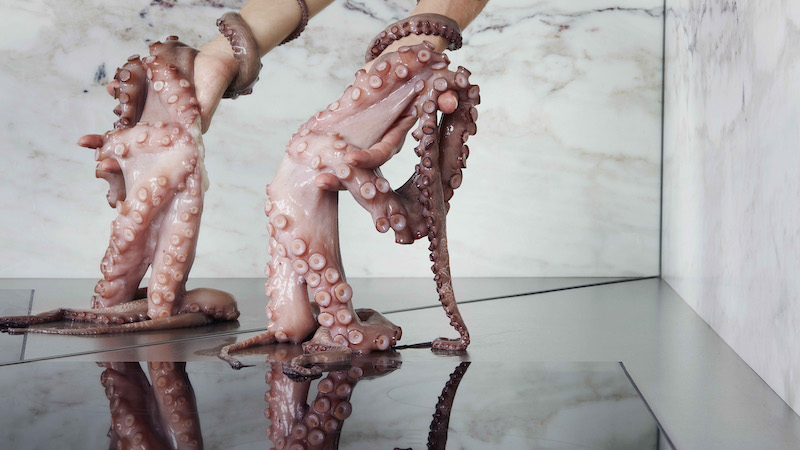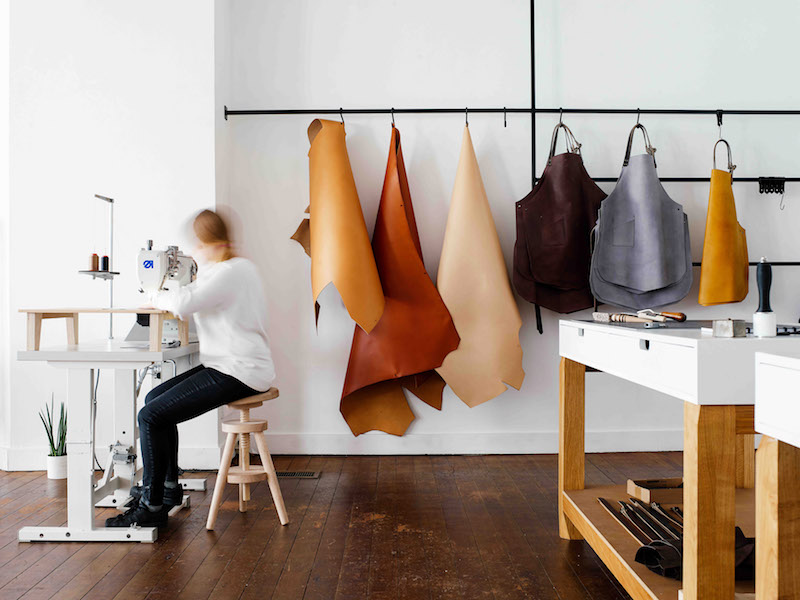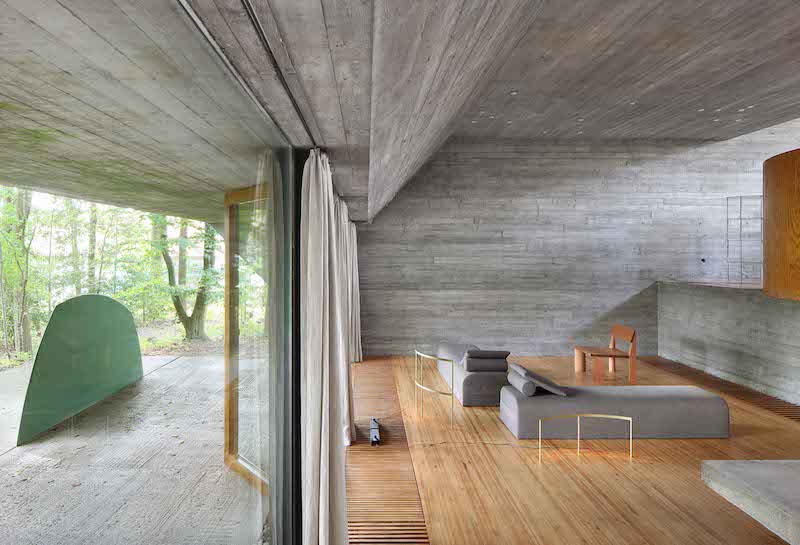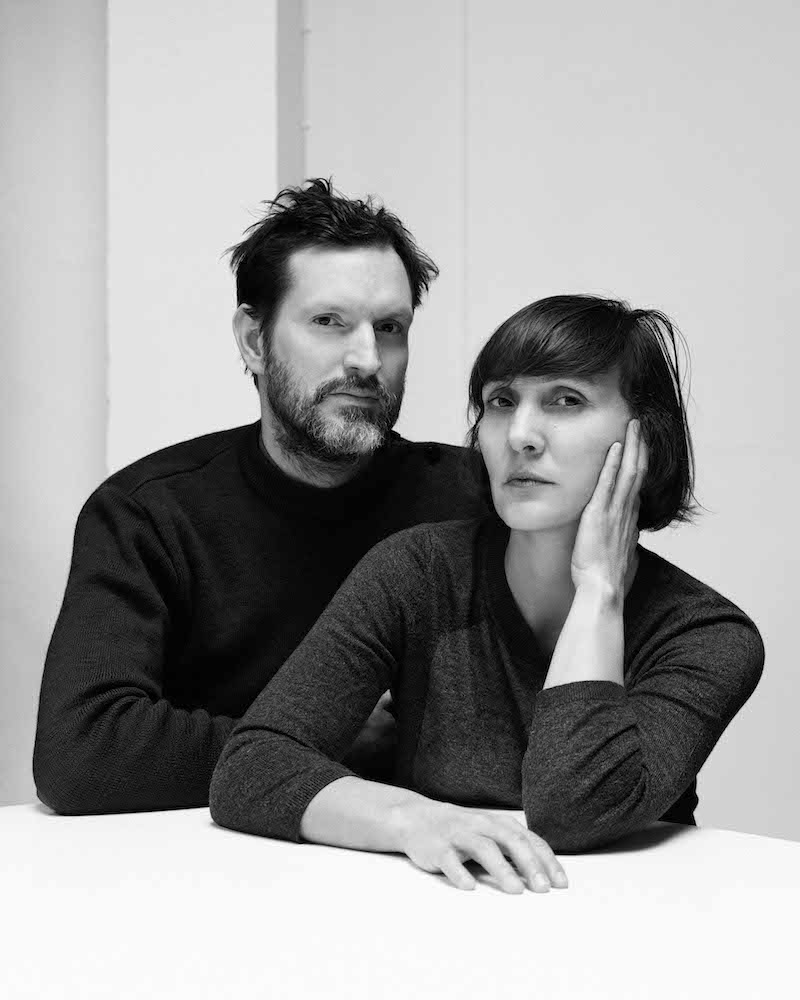MAD Brussels is a fashion and design platform that supports established or emerging labels with expertise in these fields and others, such as interior architecture and food design. Their aim through continuous collaboration with other established or emerging businesses is to contribute actively to economic growth and employment that has the potential to address further social issues within Brussels. Funded by the public sector, MAD has the responsibility to foster the city’s image as a place of innovation, excellence and participation, promoting Brussels regionally and globally as a creative hub. MAD Brussels has been hosted in New York, Tokyo and Berlin and is always looking to expand and collaborate. Some of the labels that have joined forces to further develop MAD include Maniera, Niyona, Base Design and Studio La Bouche.
Berlin Art Link caught up with MAD Director Alexandra Lambert after the collective’s fashion, food and design showcase in Berlin, ‘Brussels – Berlin…A Romance. Show and Tell’, to inquire further into what MAD is all about.

Studio La Bouche: ‘Reflexions’, Set Design, 2015 // Courtesy of Studio La Bouche and photo by Oskar
Kimberly Budd: The MAD collaboration seems rather unique, in the sense that it is very democratic in its aim to support businesses within art, fashion, design, food and tourism while teaming up with foreign trade and investment agencies. How did it first form and expand since its foundation?
Alexandra Lambert: When I set up the MAD project in 2006, I needed a lot of nerve and determination to gather around a table several public and private partners and propose they pool their energies and knowledge to the service of fashion and design. Brussels’ authorities considered these sectors on a small scale by supporting two non-profit associations devoted to their development. After convincing the Brussels government, the City of Brussels and the European level of the need to invest in this platform of image and innovation, € 7,000,000 was dedicated to the purchase and renovation of the building. Today, close to fifteen public partners ranging from the Ministry of the Environment to Tourism and Economy support the institution. They all understand how fashion and design plays a fundamental role in their strategy.
KB: One of the philosophies that underpin MAD is the belief that more jobs within these creative industries will lead to change in urban environments, and that this growth will rejuvenate traditional industries. Can you elaborate on this? How can you see this principle also being applied to other European cities or even beyond the European cultural capitals?
AL: MAD positions itself on social design that opens up new fields and new job opportunities for the future. Social design is an essential competence for the development of cities and urban environments. It becomes a tool for cities and regions by contributing to urban strategies and managing the societal challenges (aging, health, security, mobility, etc.)
European economy is aging and it is through the differential added value that the creative industries bring to the economy that it can continue to innovate. For several years, different forms of design have emerged, for example design thinking and social design. They are the essence to the original craft of the designer.
It is through collaborative design methodology, sharing, skill-building and user-centered design that new answers (product or service) are found. This methodology is transposable and can be developed in all cities around Europe and the world. It is an infinity system that requires a certain adaptation to each context.
Subsequently, European collaboration could emerge allowing the sharing of practices, methodology and savoir-faire.

Niyona, interior studio // Photo courtesy of Geert De Taeye
KB: You have travelled to present MAD to cities like Tokyo, New York, London, Milan and Beijing: how is this business model received? How have you found other organisations working with the same or similar core business values? How would you like to collaborate internationally in the future or would you prefer to retain a focus on a more local scale?
AL: Our platform often draws attention and generates curiosity since our business model is unique. MAD is covering both sectors and we always find it interesting to exchange knowledge and remain open to new collaborations with other fashion or design councils.
At MAD, there is transversality between the poles; we often try to give a cultural showcase and image to the projects we accompany in our economic programs. For example, the last ‘Belgitude’ exhibition showed the talents we exported to the Italian and international market at the Salone del Mobile.
Three years ago, with the fashion coordinator of MAD, we thought that we should draw the attention of Europe to fashion, as the capital of 500 million Europeans. We knew that we should push open the doors to make the voices of “designers” heard in the all-powerful production lobbies. We also wanted to bring together fashion centres on the same level as us on a European scale. We launched a European Fashion Summit and managed to bring together counterparts from 21 countries to reflect on the future of fashion in Europe.
One of the main focuses is in fact to work at a local scale. But the support, promotion and development of the fashion and design industries does not stop at the Belgian border. As an expertise and support centre, MAD coordinates aid and initiatives for the local and international economic development of Brussels designers. We work closely with Brussels Invest & Export, coordinating export actions, participation to international trade shows, showrooms, and so on.

Maniera: Jonathan Muecke at Juliaan Lampens Van Wassenhove House, exhibition, 2016 // Photo courtesy of Filip Dujardin
KB: Is the head office in Brussels the work studios/office for all the MAD contributors? What would a day in the office look like?
AL: This unique space merges a research and development centre concentrated on social and societal design, a business and career centre that accompanies the professional development of designers and stylists as well as a programming department that hosts exhibitions, performances, showcases and conferences focused on the future.
KB: What are some examples of the ways MAD’s collaborators support one another?
AL: A team of 25 people work in an ambitious and passionate manner serving Brussels-based creations and its links with the international community. For me, all of this is a witness of the need to unite around the same objectives and to concentrate the energies of all to reach our aspirations.
KB: What are a few of your favorite creative projects that have come out of MAD?
AL: The MAD building: On April 20th, 2017, we had the immense pleasure of inaugurating the ‘MAD Fashion & Design Platform’, a white jewel case of almost 3000m2 in the design district of Brussels. At the time, we worked with the help of the region’s head architect and asked him to accompany us in the drafting of the specifications, associating architects and designers in the makeover plan. Nearly 50 national and international offices grouped together in interdisciplinary teams and answered the call for projects. It was proof of a great mobilization of our sectors to participate in the creation of this ambitious venture! We then preselected 5 associations who presented their project to an international jury and it was the Belgian tandem of the architects V+ – Vers plus de bien-être and Rotor Design, a group very active in sustainability, who were chosen for the job.
We loved their idea of taking advantage of the 3 old black buildings, channelling the existing resources, incorporating over fifty white materials—from white foam to marble—creating a unique structure that one can describe as a “matériauthèque”. The result of this work is wonderful because it allows all our “artists” to feel at ease, without being too imposing despite the design and architecture of the centre, its unique cachet and dimension!
We have submitted a dossier to Europe Creative to create a United Fashion Council as well as several instruments to support and promote our designers on a European level. On April 21st, 2017, the day after the opening of MAD, we learned that we were selected as lead partner for the implementation of this program, the kick off meeting which was organized on September 26th in Paris. It is a magnificent gathering of energies that brings us again into a strategic contemplation of the future, in which we hope to integrate Berlin in the program!
For the inauguration of the new building on April 21st, MAD launched 3 new support programs for companies in the design and fashion sectors in Brussels. Through the BOOST programs, MAD aims to support creative talents intensively in the development and / or optimization of their business activities.
The first edition of BOOST was a great success with very positive results. Today MAD is launching its second edition for companies in the design and fashion sector with a minimum experience of 3 years. The program provides financial injection for 10 companies (5 in fashion and 5 in design) for the development of their company in one or several international markets. The selected companies will be accompanied intensively for 1 year by experts specialized in the fashion and design sectors in Belgium

The Brussels studio Niyona, who is specialized in the design and production of leather, was awarded with the BOOST grant. Thanks to the quality of their products and combining traditional savoir-faire and innovation they exposed during one week in a prestigious Parisian gallery. As a result, new collaborations were initiated with prestigious Parisian restaurant.
MAD Lab is a place where designers and experts develop new processes, products and services for commercial purposes. Durability and ecological aspects are given special attention when developing solutions. With a fundamental and unique working method, MAD encourages co-creation or participation with the final consumers. MAD Lab welcomes and supports young designers and creators that have a societal, social or sustainable innovative approach. It raises awareness and informs the public on ecodesign and guides schools and professionals along their durable projects. MADLab offers tailored support through their ‘TRIAXES’ program, funded by ERDF. The aim is to help Brussels entrepreneurs to rapidly and efficiently develop a product or a fashion collection. This is an innovative method to guide and support small businesses. It initiates a collaboration between 3 experts: a designer, a business developer and an engineer in order to guide the research development during a defined amount of time.




















